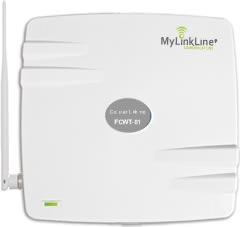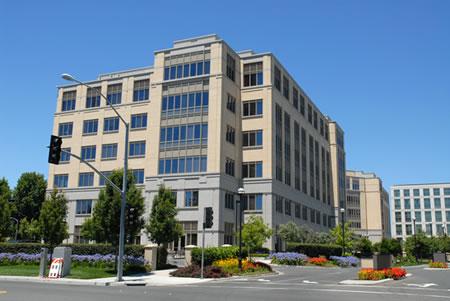How to Reduce Building Maintenance Costs – 15 Smart Strategies
Manage expenses effectively: Discover insights into building maintenance costs for better budgeting and decision-making. Start optimizing today
Elevating Savings: 15 Practical Strategies to Drastically Reduce Building Maintenance Costs
Efficient building management encompasses more than just maintaining the physical structure; it involves strategic cost reduction and resource optimization. Reducing building maintenance costs and operating costs not only contributes to financial stability but also demonstrates a commitment to responsible resource utilization and environmental sustainability.
In this comprehensive guide, we will explore a range of practical strategies designed to empower property managers and building owners to cut operational expenses without sacrificing the quality of service or tenant satisfaction.
1. Implement Energy Efficiency Upgrades
Investing in energy-efficient technologies is a fundamental step toward reducing building maintenance costs and operating costs. Consider upgrading to energy-efficient lighting systems, installing programmable thermostats to regulate HVAC usage, and optimizing energy management systems. These measures not only reduce energy consumption but also result in substantial long-term savings.
2. Cellular Elevator Phone Line Cost Saving Advantage
Incorporating innovative solutions like the MyLinkLine cellular elevator phone system can lead to significant cost savings and operational efficiency. This affordable communication system eliminates the need for traditional landlines and provides a reliable cellular connection for elevator communication. By eliminating landline costs and associated maintenance, building owners can realize substantial savings over time.
Furthermore, MyLinkLine provides a 24-hour phone monitoring service that can be combined with cellular phone lines to achieve extra cost savings.

3. Prioritize Regular Maintenance and Proactive Care
Regular maintenance is essential for preventing costly breakdowns and ensuring the longevity of building systems. Establish a proactive maintenance schedule for critical components such as elevators, plumbing, and HVAC systems. Timely inspections and maintenance can identify potential issues before they escalate into major problems, thereby minimizing operational disruptions and associated costs.
4. Introduce Water Conservation Measures
Water-saving initiatives contribute to both cost reduction and environmental responsibility. Install water-efficient fixtures such as low-flow toilets and faucets to minimize water consumption. Promptly addressing leaks and adopting smart irrigation practices further contribute to reducing water-related expenses.
5. Embrace Smart Building Management Systems and Reduce Building Maintenance Costs
The integration of smart building technologies offers a centralized approach to managing various systems within the building. Automated controls for lighting, heating, cooling, and security can optimize energy usage based on occupancy patterns, thus reducing waste. Such systems not only enhance operational efficiency but also lead to significant cost savings over time.

6. Optimize Waste Management and Recycling Programs
Effective waste management and recycling initiatives can lead to substantial cost reductions. Establish comprehensive waste management protocols that include recycling programs. Partnering with local recycling facilities and educating tenants on proper waste disposal practices can further minimize waste-related expenses.
7. Adopt Sustainable Landscaping Practices
Sustainable landscaping not only enhances the aesthetic appeal of the building but also reduces maintenance and water-related costs. Choose native plants and drought-resistant landscaping designs that require minimal irrigation. Additionally, incorporating permeable surfaces can aid in water absorption, reducing the need for costly drainage systems.
8. Leverage Bulk Purchasing and Negotiate Contracts to Reduce Building Maintenance Costs
Take advantage of bulk purchasing discounts to lower the costs of essential supplies. Negotiate long-term contracts for services like cleaning, maintenance, and security to ensure consistent quality while benefiting from cost savings.
9. Regularly Conduct Energy Audits and Benchmarking
Energy audits provide valuable insights into energy consumption patterns and areas for improvement. Benchmarking your building’s energy usage against industry standards helps identify inefficiencies and guides the implementation of targeted cost-saving strategies.
10. Foster Tenant Engagement and Education
Engage tenants in energy-saving efforts through educational campaigns and incentives. Encourage them to adopt energy-conscious behaviors such as turning off lights when not in use and using appliances responsibly. Tenant participation can significantly contribute to energy conservation and cost reduction.
11. Embrace Remote Monitoring and Timely Maintenance
Remote monitoring systems enable real-time tracking of equipment performance. Proactively identifying anomalies allows for timely maintenance and repairs, preventing costly downtime and ensuring efficient operations.
12. Implement Submetering and Utility Tracking
Submetering individual tenant energy consumption promotes awareness and accountability. This transparency not only encourages energy conservation but also ensures accurate utility billing, minimizing disputes and improving tenant satisfaction.

13. Explore Alternative Energy Solutions
Consider incorporating renewable energy sources like solar panels or wind turbines. While the initial investment may be higher, the long-term savings and reduced reliance on conventional energy sources can lead to significant cost reductions and a smaller carbon footprint.
14. Choose Sustainable Materials and Technologies
Opt for sustainable materials and technologies during building renovations and upgrades. From insulation materials to energy-efficient windows, these choices can reduce maintenance requirements, extend the lifespan of building components, and contribute to long-term cost savings.
15. Adapt to Modern Work Trends
Embrace evolving work trends such as remote work and flexible schedules. Reducing building occupancy through these practices not only lowers energy consumption but also aligns with changing work preferences and lifestyles.
Reducing Building Maintenance Costs | Conclusion
Strategically reducing building maintenance costs requires a combination of proactive measures, technological integration, tenant engagement, and sustainable practices. By implementing these practical strategies, property managers and building owners can create an environment that is both financially efficient and environmentally responsible.
Each step towards cost reduction is an investment in the building’s future sustainability and the well-being of its occupants. Through these initiatives, a harmonious balance is achieved between economic viability and ecological consciousness, ultimately leading to a more resilient and cost-effective building.

